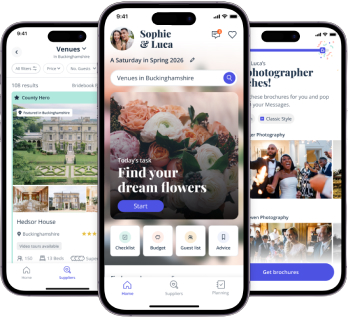A Touch of Nevaeh x Bridebook: Black History Month Exclusive
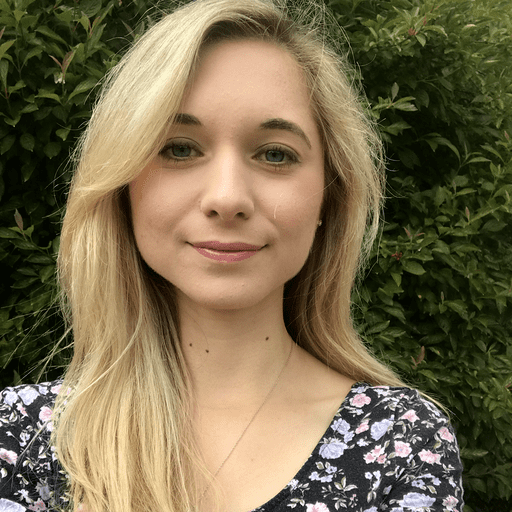
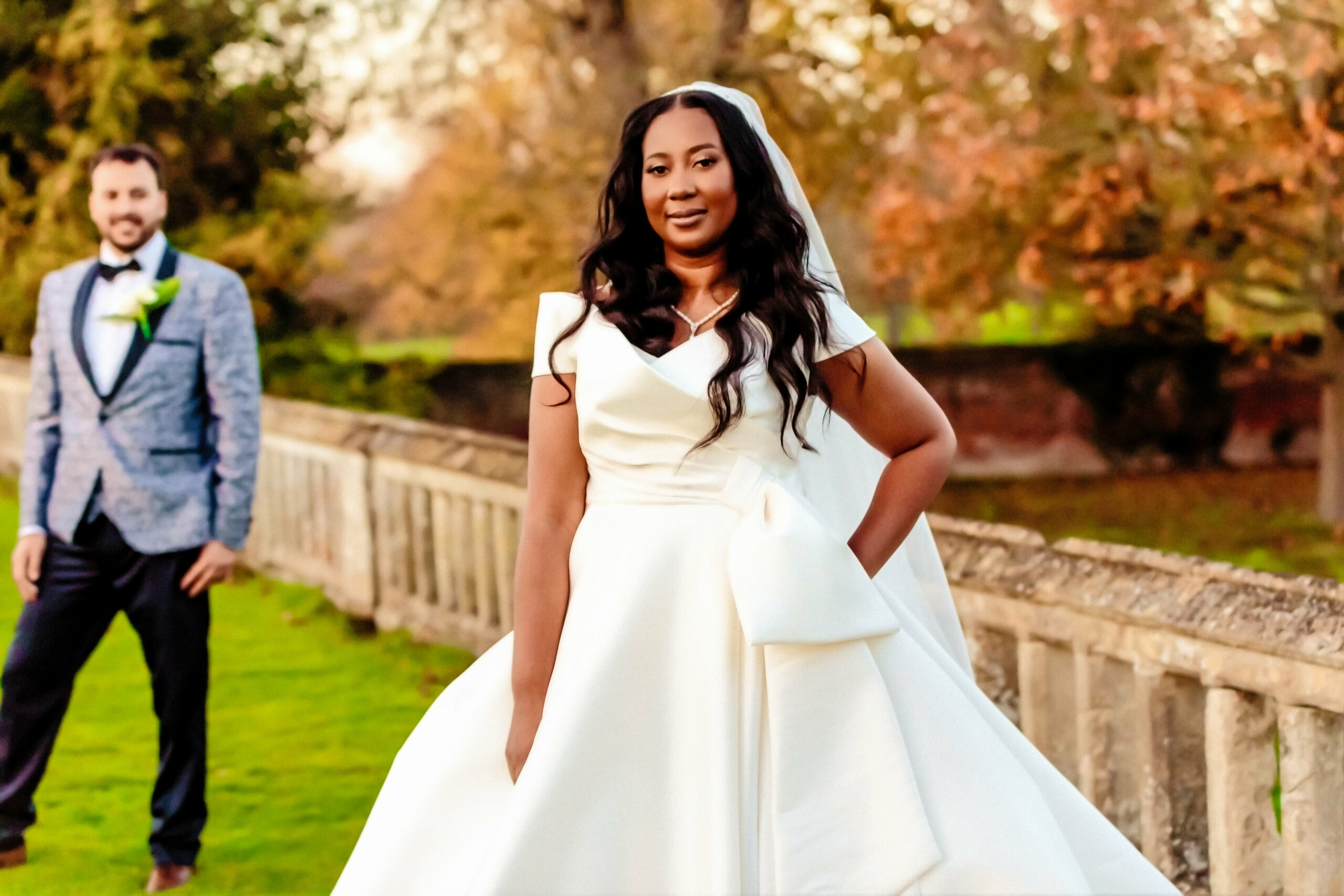
In honour of Black History Month, we’re shining a light on a brilliant Black-owned business and its wonderful founder, Tessa Williams, in this exclusive feature.
Meet Tee
Tessa, fondly known as Tee, is the Founder and Director of A Touch of Nevaeh, a luxury wedding and event planning company. Born and raised in the vibrant community of Notting Hill, West London, Tessa’s passion for events led her to graduate from QC Event School, where she gained the expertise to thrive in the luxury wedding and event planning industry. As a certified International Event and Wedding Planning Professional™ (IEWP®), she brings both creativity and precision to every event she touches. When she’s not crafting beautiful experiences, Tessa embraces her most important role—being a mum to her two beautiful children. Read on to discover her story and best advice.
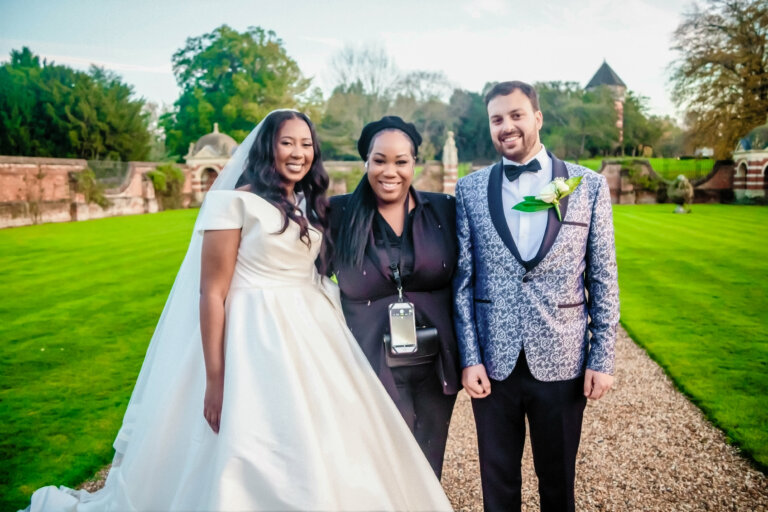
About A Touch of Nevaeh
A Touch of Nevaeh is a certified International Luxury wedding and event planning company based in Chelsea, London. We provide a first-class luxury planning experience to all our clients. Over the years, we’ve had the pleasure of curating diverse and multicultural weddings and events. Our in-house team consists of five coordinators: three of my sisters, my daughter, and my best friend. They’re an invaluable part of the team, and we couldn’t execute our weddings and events without them.
“We create astounding experiences that leave guests talking for years to come.” – Tee
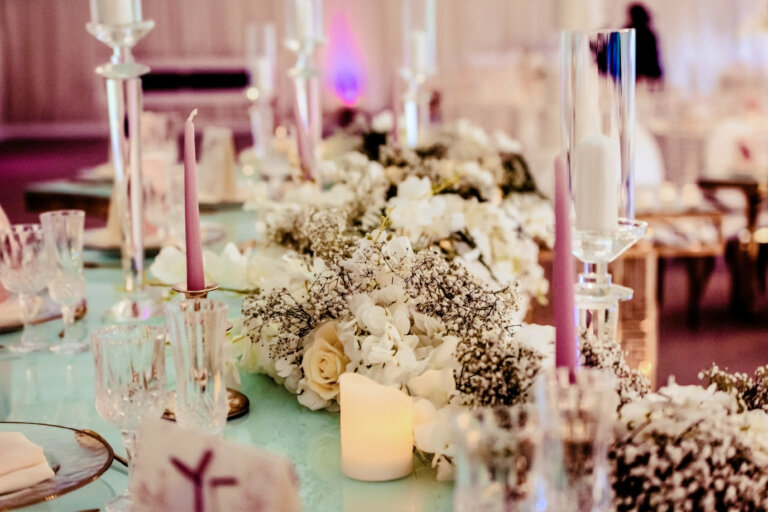
Tee’s First Wedding Memory
I remember looking at photos of my parents’ wedding when I was young and being fascinated by it. Maybe it was because they got married a year before I was born, so I wasn’t there, but my two older sisters were flower girls. Their wedding was in the 80s, so it would be considered lavish by today’s standards. They had seven bridesmaids, two flower girls, seven groomsmen, and an incredible five-tier rum/fruit cake, plus two additional plain cakes (a total of seven cakes!). They even had a steel band procession for their entrance into the church—every little girl’s dream!
My parents have been married for 42 years and have seven children—six girls and one boy, who came last—plus nine grandchildren. Coming from such a big family, we’re never short of an event! Years later, my sister Nina and I became the family party planners. Today, we continue planning luxury weddings and events in the UK and internationally.
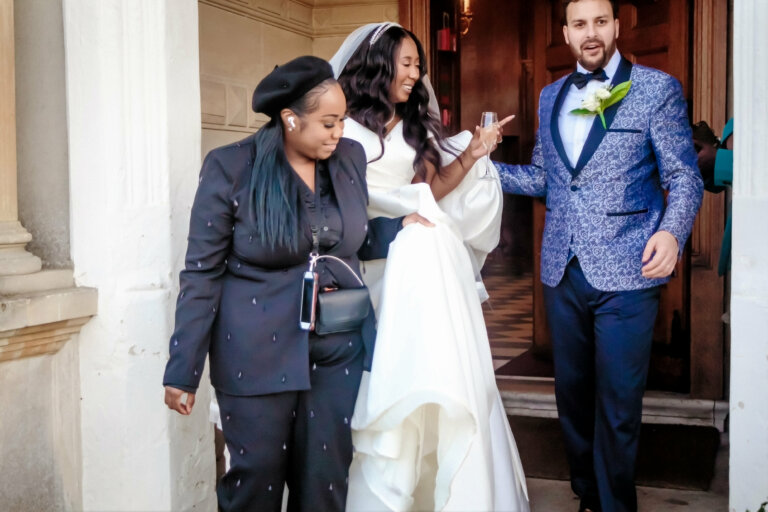
Tee’s Culture
I’m of Caribbean heritage. My parents were born in Dominica, a small island between Guadeloupe and Martinique (not to be confused with the Dominican Republic, which is a common mix-up!). My dad was born in Pointe Michel, and my mum in Scott’s Head, where the Caribbean and Atlantic seas meet. I’ve been told it’s an incredible sight to see the two bodies of water joining.
When it comes to aspects of my culture that are most important to me, I think language is vital—it’s the essence of any culture, and part of a person’s identity and character. While English is Dominica’s official language, most people speak Kwéyòl (Creole), a French-based patois. I understand it well and speak it, especially when I’m conversing with my parents. Holidays and festivals like Independence Day and Carnival are also important, as they carry meaning and significance for our culture.
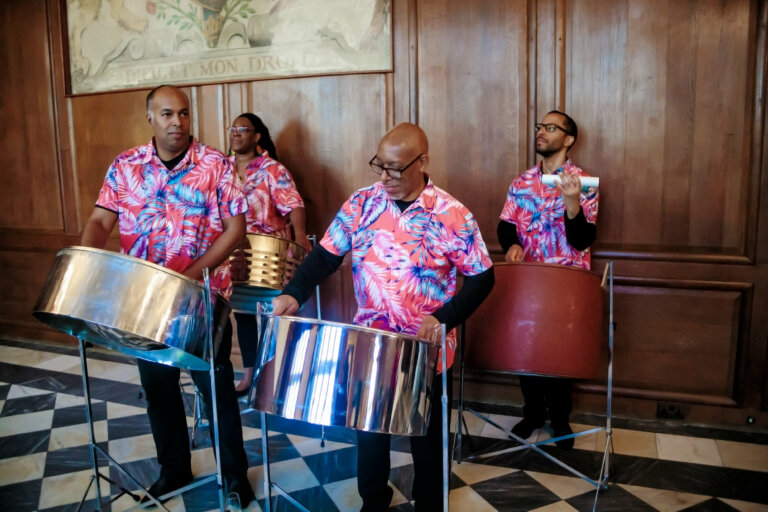
8 Cultural Traditions of a Caribbean Wedding ‘Then’…
- Planning: A traditional Caribbean wedding typically involved the whole village or community where the couple lived. Relatives and community members all had roles in preparing for the ceremony. Today, modern couples seek help from wedding planners like me, but in the past, planning was a shared responsibility by those who knew the couple well.
- Cakes: Traditional weddings required elaborate preparations, including vast amounts of food and several cakes. The cakes were covered with white lace so that the bride wouldn’t see them until her wedding day.
- Ceremony: Before the ceremony, guests played ring games and enjoyed a variety of food. The festivities lasted until daybreak, when attendees prayed for the couple before they prepared for the ceremony. If the ceremony was held in a church, it usually followed the form of an English wedding. The groom wore a new suit, and the bride wore a white dress, veil, and gloves.
- Reception: The wedding reception was usually held at the groom’s house, unlike today’s modern weddings, which are often held in grand, lavish venues.
- Food: Dinner typically included dishes like curry goat, mountain chicken, rice and peas, roast yam, and boiled banana, similar to what we serve at weddings today.
- Speeches: The speeches were usually full of praise for the couple, followed by dancing. Music was often provided by a mento band or a fiddle.
- Entertainment: The highlight at the end of the evening was a dance with music from a fife, banjo, and guitar. Quadrilles were often danced, with one set comprising the bride, groom, their parents, maid of honour, and best man. Today, this is similar to the Candy dance or Electric slide.
- Honeymoon: After the reception, the newlywed couple would go to their new home and stay there for about a week. In the past, the couple was excused from working in the fields, and family members would bring them food and offer advice. Nowadays, couples typically go on honeymoons or mini-moons.
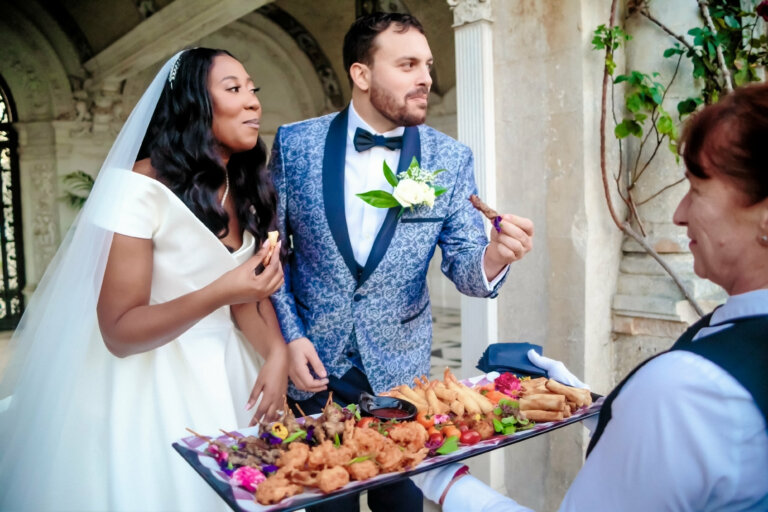
In modern times, many of these folk customs and traditions are no longer observed, and new practices have been introduced, but the old ways are still remembered fondly and respected.
8 Tips to Consider When Planning Cultural Weddings ‘Now’…
- Research, research, and research again: Before planning any cultural wedding or event, do thorough research on the cultures and traditions involved. Understanding these details ensures that the day is meaningful and respectful.
- Incorporate both cultures: Whenever possible, integrate both cultures into the wedding. Families can feel left out if their traditions aren’t represented, so we always encourage our clients to include elements from both sides, whether through decor, music, food, attire, or even the cake flavor.
- Communicate with both families: Include parents, grandparents, and elders in discussions about cultural elements. These conversations can sometimes be daunting, but they make family members feel valued and included. We’re here to help facilitate these conversations and guide you through all the decision-making.
- Embrace your partner’s culture: This is an important step in building a strong foundation with your partner and their family. Educating yourselves about each other’s cultures is key, and these discussions will continue, especially if you plan to have children one day.
- Understand your budget: Be transparent about your budget from the beginning. Sometimes couples have amazing ideas, but financial limitations can prevent them from being realised, which can lead to stress or disagreements between families.
- Respect other cultures: It’s essential to respect the cultures of both families, and this applies to wedding professionals as well. Listen carefully to clients’ requests and do your best to meet them while respecting their cultural preferences.
- Venue and vendor selection: Choose venues and vendors who can accommodate your cultural needs. Some venues may have restrictions, like not allowing open flames, or may require a license for outdoor entertainment like fire dancers or fireworks.
- Inform your guests in advance: Prepare your guests for the big day, especially if there are specific attire requirements. For example, in some traditional weddings, family and guests may need to wear clothes made from the family’s tribal fabric. Give guests enough time to source materials and find a tailor or seamstress.
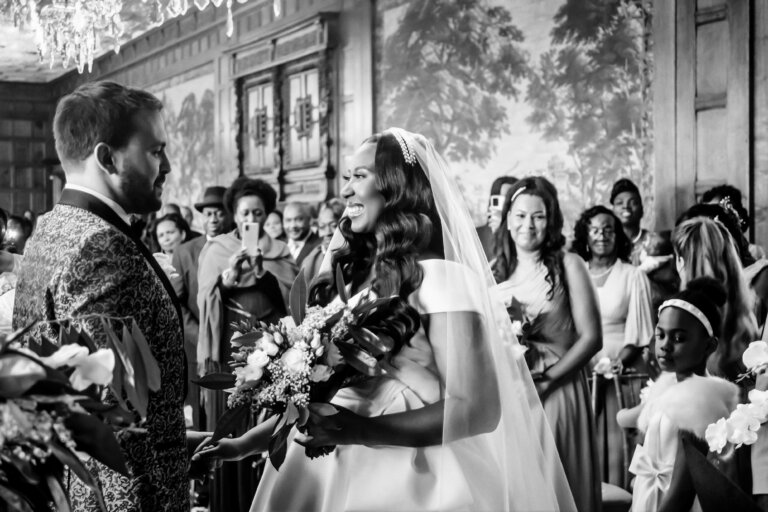
The Impact of Systematic Biases in the Wedding Industry
One area where we still see bias is in venue-preferred supplier lists. Most venues don’t have many, if any, Black-owned businesses on their preferred supplier lists. This has a big impact, as it limits opportunities for Black-owned businesses to work in established venues across the wedding industry. When clients are looking for vendors, they usually start by checking the venue’s supplier list. How are Black-owned businesses supposed to be seen if they aren’t on these lists? Black businesses are largely underrepresented in most venues.
When we’ve attended meetings with couples, the teams are predominantly Caucasian. Sometimes our Black clients find it difficult to navigate these meetings without me present. In the last couple of years, I have seen more Black-owned businesses added to preferred supplier lists, but there is still room for improvement. It would be beautiful to see more diversity in the wedding industry, especially when it comes to race.
Venues need to make a real effort to reach out to Black-owned businesses and provide them with the tools to get onto their preferred supplier lists. It’s important that venues cater to all races. For example, why is it that many venues don’t have Caribbean or African caterers on their preferred supplier lists? Imagine a Black couple wanting to book a venue but finding that it doesn’t offer Caribbean or African cuisine, and then being told they can’t bring in their own catering team either. Do you see the problem? The message is already clear: “We don’t cater to you.” It’s disappointing, and some couples end up settling for whatever cuisine the venue offers, even though it doesn’t represent their culture.
I’ve seen this firsthand. I remember being asked to organise a styled shoot for a venue through a recommendation. Everything was great at first—friendly phone calls with the venue manager, everything running smoothly. But when I showed up for the site visit, the energy changed completely. I walked in with a smile, and the first person I saw— the same venue manager—looked taken aback and asked if I was lost. I told him I was there for a site visit, and he seemed surprised. His whole attitude shifted. From being warm and welcoming over the phone, he became cold and distant in person. He even said, “You sounded different on the phone,” which I brushed off. Then, when the Caucasian photographer arrived, he was all smiles and much more talkative with him. At that moment, I knew it was because I’m a Black woman. Thankfully, the photographer and I had worked together before, and he praised my work, which visibly shocked and embarrassed the venue manager. It was a small victory, but the underlying issue was still there.
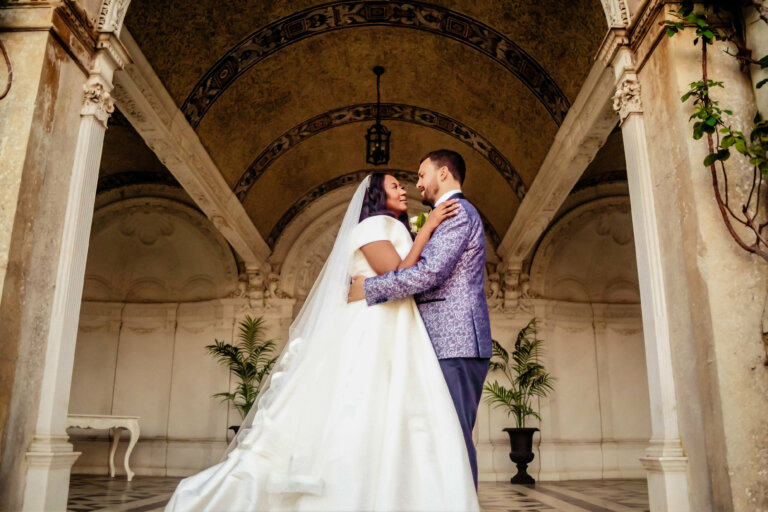
Creating an Inclusive and Supportive Environment
I can’t stress enough how important it is to include parents, grandparents, and elders from both families when discussing cultural elements for the wedding day. This applies to couples and other planners in the industry when working on multicultural weddings. These meaningful discussions help identify what’s important to each family, making it easier for the couple to make their final decisions. We also see it as an opportunity to learn about both cultures. By including everyone, we all gain a better understanding of each family’s traditions, which ensures support from both sides.
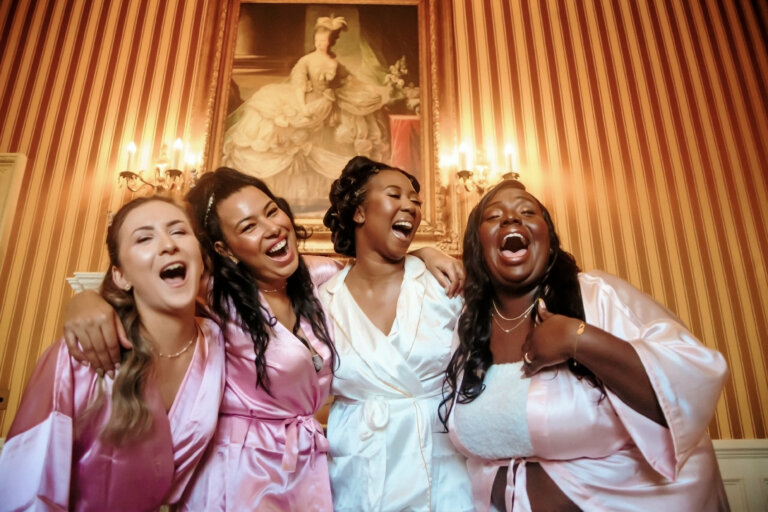
Challenges with Couples from Diverse Backgrounds
I remember planning a wedding for a beautiful couple from two diverse cultures. The bride was set on having a Black female harpist for their special day. The groom was happy with any harpist but understood how important this was to his soon-to-be wife. It sounds like a simple request, but I can tell you, it was a challenge (Oh, how we love a good challenge!). We searched far and wide to find exactly what they wanted. I emailed several harpists, but most Black female harpists are based in the U.S., and no one responded.
We eventually found the perfect match, but again, no response—this harpist was in the entertainment industry, not weddings, and was travelling internationally. So I started going through her old posts, commenting and asking her to reach out to us, but still no reply. Finally, we saw a picture of her with her boyfriend, whom she had tagged… Yes, we went that far and DM’d him to help track her down. Long story short, she contacted us, laughing, saying she loved our determination! We actually ended up hiring her for a different wedding later that year. Confused yet? So were we! In the end, our couple went with a European harpist. Sometimes you just have to meet halfway.
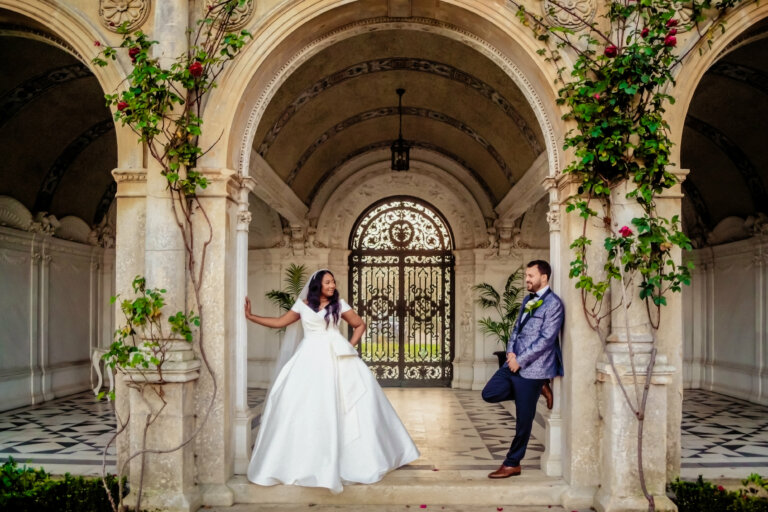
Meet Jon and Karyn
Meet our beautiful couple, Jon and Karyn Strachan-Zahedieh. Jon is of Iranian heritage, and Karyn is of Jamaican heritage. We absolutely loved planning their wedding. They didn’t hold back when it came to making their special day unforgettable. We made sure that every vendor we chose was able to deliver and bring the couple’s vision to life.
Quick story from the day. The day before the wedding, we found out that the mother of the bride had ordered another cake—a 3-tier traditional Caribbean rum fruit cake that needed to be displayed. The other cake was a 4-tier modern abstract design that would be constructed on the day. One thing I knew for sure was that both cakes couldn’t fit on the same table! I explained the issue to the couple and told them not to worry, we’d sort it out.
I called our decor stylist, Bukky from Beautiful Things Events, who had already packed her van for the day, but she assured me she’d figure something out. Long story short, our amazing stylist woke up extra early, stopped by her warehouse, and picked up another cake table that matched the first one perfectly. I also called the catering team to let them know we now had two cakes to cut, so they wouldn’t be confused.
Fast forward to the room reveal: our couple was absolutely blown away when they saw that we had managed to get a second table. It was another magical moment! The guests couldn’t stop talking about it, as they had never seen two wedding cakes displayed at a wedding before. Both cakes were not only stunning but also tasted delicious.
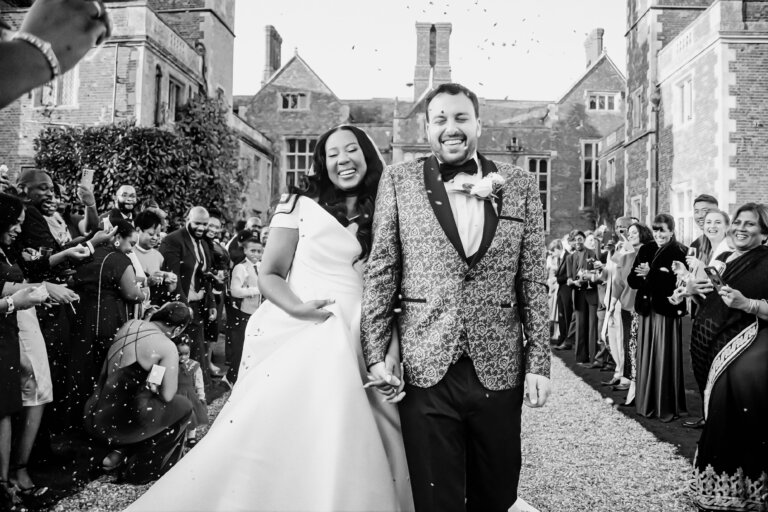
Plan Your Cultural Wedding
In celebration of Black History Month, Tessa Williams exemplifies how the wedding industry can honour and integrate cultural heritage into every celebration. Through her work with A Touch of Nevaeh, Tee highlights the importance of embracing and respecting diverse traditions, making each wedding a unique reflection of the couple’s backgrounds. Her and her team’s dedication to creating meaningful, culturally rich experiences underscores the impact that thoughtful planning can have on celebrating heritage and fostering inclusivity.
“What I enjoy most about weddings now is that I love meeting new people, learning different cultures, and bringing my clients’ visions to life.” – Tee
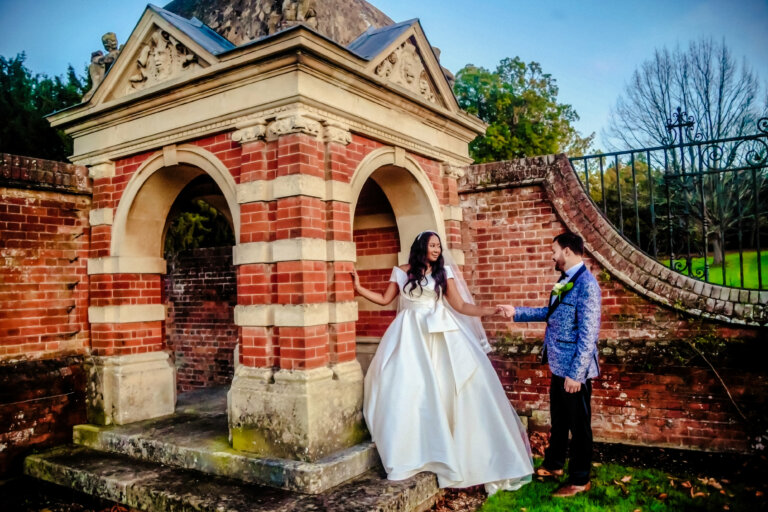
Credits
Author
Tessa Williams IEWP at A Touch of Nevaeh
Website: www.atouchofnevaeh.com
Socials: @atouchofnevaeh
Photography
Eniola Alakija
Website: www.eniolaalakija.com
Socials: @eniolaalakija
You Might Also Like…
- Black Wedding Traditions to Honour Your Heritage
- How to Plan a Diverse Wedding
- Supplier Showcase: Brilliant Female-Owned Wedding Businesses
- 11 Tips for Planning a Queer Wedding: From a Queer, Engaged Wedding Photographer
Happy Planning!

